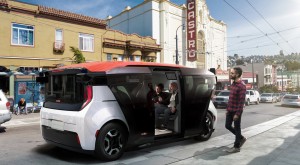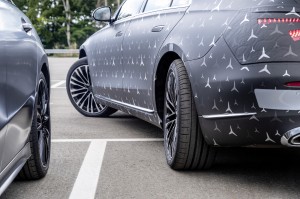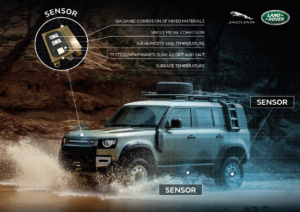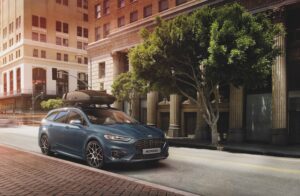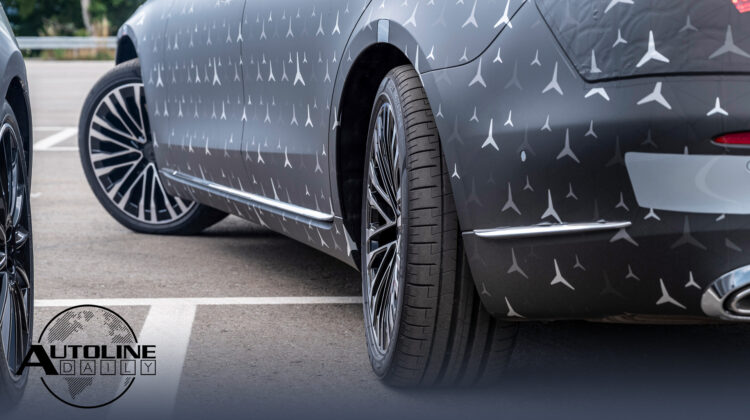
Listen to “AD #2943 – Tesla Reports Strong Q3 Earnings; GM Still Backs Nikola Deal; ZF Improves Its Rear Wheel Steering System” on Spreaker.
Follow us on social media:
Runtime: 10:31
0:07 Tesla Reports Strong Q3 Earnings
1:39 More Tesla FSD Details
2:40 GM’s Cruise Wants Vehicles Without Pedals or Steering Wheel
3:24 U.S. Vehicle Registrations Correction
4:25 Why Off-Roading is Becoming More Popular
5:36 More GMC Hummer EV Details
7:45 GM Still Backs Deal with Nikola
8:14 ZF Improves Its Rear Wheel Steering System
9:01 JLR Using Aerospace Sensors to Test Parts
9:40 Ford Mondeo Going Hybrid Only
Visit our sponsors to thank them for their support of Autoline Daily: Bridgestone, BorgWarner and Intrepid Control Systems.
This is Autoline Daily, the show dedicated to enthusiasts of the global automotive industry.
TESLA REPORTS STRONG Q3 EARNINGS
Tesla reported its third quarter earnings yesterday and the numbers look really good–with one caveat. Tesla sold almost 140,000 cars, up 44% compared to a year ago. It brought in $8.7 billion in revenue, up almost 40%. It posted an operating profit of $2 billion, up a whopping 200%. And it put $369 million on the bottom line, up 146%. Investors loved these numbers and the stock was up more than 20% in after hours trading. Critics will point out that the only reason why Tesla made a profit is that it earned $397 million from selling ZEV credits to other automakers. Sure enough, if not for those credits, Tesla would have lost money. And that means it still can not turn a profit on its basic car-making operations. But here’s our Autoline Insight. Selling ZEV credits was always part of Tesla’s business plan, so we’re not going to criticize it for selling so many of them. By the way, most of that money probably came from Fiat-Chrysler. The critics have a legitimate point, but here’s a number we can’t overlook. Tesla dramatically increased its pile of cash, which grew more than 170% to over $14 billion. That dramatically boosted Tesla’s balance sheet and provides it with a hell of a war chest to invest in new products and services.
| Tesla Q3, 2020 Earnings | ||
|---|---|---|
| Sales | 139,593 | +44% |
| Revenue | $8.7 Billion | +39% |
| Operating Profit | $2.0 Billion | +209% |
| Net Profit | $369 Million | +146% |
MORE TESLA FSD DETAILS
And in other Tesla news, we’ve got more info about its Full Self Driving Beta update. The system is combined with Navigate on Autopilot, which enables it to drive on main roads and highways. But Tesla warns drivers they must keep their hands on the wheel at all times and it can be dangerous if they’re not constantly paying attention. Some other features the update enables include making lane changes off highway, selecting forks to follow your navigation route, maneuvering around other vehicles and objects, and making left and right turns. And as we said yesterday, the beta version is currently only available to a select number of owners. But if you want to see it in action, some of them have already posted videos on social media. But it’s about to cost owners even more. Elon Musk tweeted that starting on Monday, Full Self Driving will go up by an extra $2,000, that applies to both new vehicles and upgrades. With that increase the system now costs $10,000.
GM’S CRUISE WANTS VEHICLES WITHOUT STEERING WHEEL OR PEDALS
And speaking of self-driving vehicles, GM’s autonomous unit, Cruise, is seeking regulatory approval from the U.S. government to operate vehicles on public roads without a steering wheel or pedals. The company wants to deploy a limited number of its Origin shuttles, which it revealed earlier in the year, in the next couple of months. At the same time, Cruise is withdrawing a petition it filed with NHTSA in 2018 to operate autonomous Chevy Bolts without certain safety features. Last week, California granted Cruise permission to operate vehicles without a safety rider on board in San Francisco. The company plans to begin building the Origin at the end of next year or in early 2022.
U.S. REGISTERED VEHICLES CORRECTION
A quick correction from yesterday’s show. We said there are 111 million registered vehicles in the U.S. That of course is way off. There are over 280 million cars, trucks and busses registered in the U.S.
WHY OFF-ROADING IS BECOMING MORE POPULAR
Even though it’s been around for decades, off-roading is becoming more popular around the world lately. So why the surge in popularity? Recently on Autoline This Week, Bob Pyle, the President of Light Vehicle Systems at the supplier Dana, which provides components for off-road beasts like the Wrangler and Bronco, shared his insight.
Bob Pyle, President, Light Vehicle Systems Dana
“I just think the younger generation are more focused on experiences then necessarily acquiring material goods. And off-roading and outdoor lifestyle is becoming increasingly popular around the world. I even think candidly what we’ve been going through with the COVID-19 pandemic is causing people to allocate their dollars differently. And spending time outdoors, off-roading, camping and doing those kinds of things is seeing a surge. I also think we can look to the biggest auto market in the world, China, and see that off-roading and that kind of lifestyle is really taking off there as well. And with the number of consumers in China, when that really gets going, it’s going to be a very, very big phenomenon.”
MORE GMC HUMMER EV DETAILS
And the all-new Hummer EV will be part of that phenomenon. It ought to be with 11,500 lb-ft of torque, but let’s pump the brake on that figure a little bit. As a few commenters pointed out yesterday, that is the at-wheel torque number when multiplied through the front and rear drive unit gear ratios, not the drive units themselves. The Edition 1 version of the Hummer EV, which is already sold out, will feature three drive motors. One is mounted up front and sends power through a locking differential with a fixed ratio of 13.3:1. There are two motors in the rear that are integrated into one unit and they can be spun independently of each other or sync up to simulate a locking differential. The final drive ratio at the rear is a fixed 10.5:1. Now let’s move on to the battery. While GM has not revealed how many kWh it is, it did say that there will be two layers of vertically stacked pouch cells per battery module and that 24 modules will make up the entire pack. The cell chemistry is made up of nickel, cobalt, manganese and aluminum. And charging up of the battery is an interesting process. The pack is able to switch from its native 400-volts to 800-volts during charging. GM says that “a disconnect unit and mechanization within the pack enables the battery to switch from” a parallel to series setup. It sounds like instead of trying to charge the whole pack at the same time, it can break it up into two sections. As we know, charging slows down when the battery reaches a higher state of charge. By breaking the pack into sections, when the charge rate slows down in one half, it can switch to the other and speed up the entire process.
GM SAYS IT’S STILL COMMITTED TO NIKOLA
Looks like GM could still go through with its deal with Nikola. Yesterday, GM president Mark Reuss said they’re still going forward with the deal, though nothing final was announced. GM is going to get 11% of Nikola’s stock, which was up 8% on Mark Reuss’s comments. That stock price is about half of what it was when company chairman Trevor Milton was accused of misleading investors. But if and when GM announces a final deal, we would expect the price to go up higher.
ZF IMPROVES ITS REAR WHEEL STEERING SYSTEM
All-wheel steering offers a number of benefits, like a better turning radius and improved stability at higher speeds. Now the supplier ZF is improving its rear axle steering system. The previous system was able to turn the wheels up to 4.5-degrees but this new unit takes that to 10-degrees, which is a massive increase. With the market for EVs and AVs growing, ZF also added a steer-by-wire function and increased the actuating force so it could be used on heavier vehicles. ZF says the system will be used on an upcoming luxury model this December. We can pretty much guarantee you it’s the new Mercedes S-Class. In that vehicle, the new system reduces the turning radius by 2 meters compared to the previous model.
JLR USING AEROSPACE SENSOR TO TEST PARTS
Jaguar Land Rover is turning to the aerospace industry to test and develop new metals and composites. It’s taking part in a two-year project that will use technology developed for aerospace to better understand how materials respond to different weather and terrains. The tests will occur in North America over 400,000 kilometers or nearly 250,000 miles. Samples of new metals and composites will be built into aerospace sensors, which monitor the performance of the materials during tests. That data will then be used to develop more durable, lightweight materials for future models.
FORD MONDEO WILL BE HYBRID ONLY
Ford continues its electrification push in Europe. The automaker announced it will no longer offer a gasoline-only version of the Mondeo. It’s now only going to produce full hybrid powertrains for that model.
And don’t forget to tune into Autoline After Hours this afternoon. Our guest is industry expert and consultant Paul Eichenberg, also joining us is Doron Levin from Seeking Alpha. So join John and Gary at 3PM eastern time today for some of the best insider discussion in the industry.
But that’s it for today, thank you for watching.
Thanks to our partner for embedding Autoline Daily on its website: WardsAuto.com
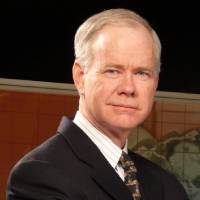
John McElroy is an influential thought leader in the automotive industry. He is a journalist, lecturer, commentator and entrepreneur. He created “Autoline Daily,” the first industry webcast of industry news and analysis.




